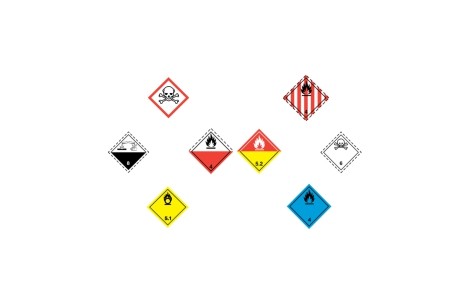In the first part of this two-part series, we elaborated on the various aspects of UN-certified FIBCs.
In this part, let’s understand the 6 types of performance tests that are required to qualify an FIBC as an UN-certified FIBC.
The 6 Performance Tests Of UN-certified FIBCs
1. Top Lift Testing
The top lift test comprises of an FIBC being picked up by an approved lifting device and suspended by lift loops for a duration of 5 minutes. During the test, a hydraulic cylinder is placed over the bag, which pushes the material downward. The FIBC must maintain its integrity with a 6:1 SWL load. If there is no permanent deformation or loss of contents, the bag is considered as passed.
2. Stack Testing
All the UN-certified FIBCs that are designed to be stacked must undergo this test. It essentially calls for a top load to be placed on a filled bag for 24 hours. Pressure is applied to imitate 2 bags stacked on top of the bag being tested, weighing 1.8x the combined maximum permissible gross mass that may be stacked on the FIBC. The test ensures there is no loss of contents or deterioration of the bag during this time, making it safe for transportation.
3. Drop Testing
With drop testing, the FIBCs are filled with material up to SWL capacity before being dropped from specific heights on the most vulnerable part of the base of the bag. The drop height is decided as per the FIBC’s packaging group.[1]
- PG I: 70.9”
- PG II: 47.3”
- PG III: 31.5”
In order to be certified, the bag should not burst or allow any loss of contents during or post the drop test. Although, in certain cases, a slight momentary discharge is permitted.
4. Topple Testing
During topple testing, the FIBC is toppled from a specific height onto any part of its top on a flat and smooth surface. The height is based on the bulk bag’s packaging group with the same criteria as the drop test. The bag should not burst or leak if it is to be UN-certified.
5. Righting Test
FIBCs that are to be lifted from the top and/or the side must go through the righting test. For the test, the FIBC is filled to the SWL capacity, knocked on its side, and lifted to an upright position. The lifting is done at specific speeds by one (bags with two lifting straps) or two (bags with 4 lifting straps) lifting devices to check the integrity of the bag. If there is no palpable damage to the bag or the lifting devices, it is considered as passed.
6. Tear Test
The tear test has two parts. To begin with it, the bag wall is punctured by a knife, creating a cut at least 100mm long at a 45-degree angle.
Part One
The first part of the test involves using a uniform top load with twice the maximum permissible safe working load. To pass this, the bag needs to remain intact for no less than 5 minutes.
Part Two
The FIBC must maintain its integrity when being lifted and suspended for a minimum of 5 minutes.
The passing condition for this test is that the knife cut must not grow more than 25% of its original length.
Apart from these 6 tests, UN-certified FIBCs need to go through a rigorous 60-minute vibration check. The vibrations are set at a frequency that causes the bag to raise from the platform. The bulk bags which do not show any signs of leakage or rupture post this process are given the UN Certification.
Choosing The Right Type Of UN-certified FIBC
Not all UN-certified bulk bags are created equal. There are multiple sizes, styles and packaging requirements that need to be considered before choosing an FIBC for your operations.
At Emmbi, we have drafted rigorous internal standards that ensure each FIBC meets the certification specifications while being able to carry a weight of up to 2000 kilograms. This makes our bulk bags one of the strongest in the market.
All the UN guidelines, including transparent identification, high testing standards, labelling requirements, and a cap on maximum volume per bag, are followed stringently for each FIBC, making sure it eliminates all kinds of risks.
An ISO 9001, 14001, and 45000-certified company Emmbi is a leading manufacturer of Flexible Intermediate Bulk Containers (FIBCs), agro polymers, water conservation products, and more, with 41+ Labordata certifications.
To learn how our UN-certified FIBCs can help you mitigate the various risks of transporting and storing dangerous goods, please visit https://emmbi.com/un-certified-fibc/ or write to us at sales.export@emmbi.com.
References [1] Labordata Testing of dangerous goods FIBCs – https://www.labordata.com/index.php/dangerous-goods-fibcs/testing-dg




